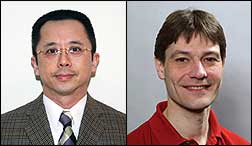Following a year in which hearing instrument unit volume increased by only 2.3%, according to HIA’s own statistical program, talk at the meeting often centered on what steps might be taken to increase the market penetration of hearing instruments above the historical levels of 21-23%. Mary Furlong, EdD, founder of Mary Furlong and Associates, a business development, marketing, and public relations firm based in San Francisco, provided the keynote presentation, titled “Turning Silver Into Gold.” Furlong detailed demographic information about the Baby Boomer generation and the marketing opportunities related to them. She half-jokingly referred to two types of Baby Boomers: 1) those who have bumper stickers advertising the universities that their children attend, and 2) those who have new kitchens, take exotic vacations, and who have become empty-nesters with higher disposable incomes.
Furlong says that the vast Baby Boomer demographic, or the “silver tsunami,” is one that is reshaping society. Baby Boomers, as they progress through life, experience many stages. The objective is to marketing to these consumers in a way that captures their imagination, she says, which means creating a mosaic of opportunities and a sense of urgency in dealing with the things that matter most to them—family (particularly grandchildren), friends, and finding greater meaning in life as they age. Additionally, according to Furlong, women make 83% of the buying decisions for
Better Hearing Institute Executive Director Sergei Kochkin, PhD—author of the Knowles MarkeTrak series and a long-time surveyor of consumer satisfaction with hearing aids—presented what he called “outcome measures” on BHI’s activities during the past year, including its PBS mini-documentary, video news releases, and other press activities related to hearing loss on topics ranging from income levels to child safety issues. In total, according to Kochkin, these press activities resulted in a minimum of 3,000 placements, reaching 215 million people, with advertising worth more than $3.7 million. An integral message in all BHI news items is that hearing loss is not necessarily a sign of aging or disability. “You shouldn’t have to enter into an existential crisis just because you’re getting a hearing aid,” says Kochkin, pointing out that 65% of all the people who have hearing loss are below retirement age.
Kochkin also invited hearing care professionals—represented by the key professional organizations at the conference— to use anything and everything that they find useful on the BHI Web site at www.betterhearing.org. “BHI’s mantra to hearing care professionals is simple: ‘Steal our stuff!’ You don’t even have to mention BHI [as its source],” he says. Web site resources include PSAs, physician and consumer education materials, an interactive hearing loss simulator, as well as archives of relevant articles ranging from marketing statistics to self-help guides written by some of the most prominent audiologists and medical experts in the field.
In 2008, BHI has enlisted the assistance of former Miss America Diedre Downs to inform the public about children’s hearing health care, assist in public awareness efforts related to Better Hearing and Speech Month in May, as well as attract new celebrity endorsements. As with PR activities in 2007, a number of prominent syndicated columnists will also be accessed. Additionally, the organization will help promote hearing awareness through the media and corporate partners, advocate for the Hearing Aid Tax Credit Bill, address tinnitus mitigation, and increase the utility of BHI’s quick hearing check for consumers which is also available on the BHI Web site.
Because so many industry initiatives, including the Hearing Aid Tax Credit bill, are directly affected by
One of the highlights of the annual meeting is a summary of activities and initiatives by invited professional organizations. This year, presentations were offered by former AAA President Paul Pessis and AAA Foundation Representative Sharon Fujikawa Brooks; ADA President David Burkey and President-Elect Charlie Stone; ASHA Representative Dennis Burrows; and IHS President James Ogurek. Additionally, Tom Westermann (
Lucille Beck, PhD, chief consultant of rehabilitation services and director of audiology and speech pathology at the Department of Veterans Affairs, noted in her presentation that the VA’s use of hearing aids rose by 12% in its fiscal year and now constitutes 1 in every 7 hearing aids dispensed in the United States. She says that hearing loss has been listed in the top-three disabilities associated with military service in every US armed conflict since World War II (with the exception of the first Gulf War, probably due to the brevity of that campaign). She also presented data on hearing loss and tinnitus as the result of blast injuries and polytrauma—increasingly frequent injuries resulting from the highly powerful roadside bombs being used by insurgents in
Outgoing HIA President Cathy Jones (Phonak) was recognized with a gift of appreciation by the association for her excellent leadership during the last 2 years. Replacing Jones will be Jerome Ruzicka (Starkey Laboratories) who will serve as HIA president for his second time. Newly elected to 1-year terms on the HIA Board of Directors were Ian Roane (Sound Design Technologies, formerly Gennum) and Robert Tong (AMI Semiconductor), and elected to 2-year terms on the board were Jones, Ruzicka, HIA Secretary/Treasurer Jeff Taylor (Sonion), John Zei (Knowles Electronics), Todd Murray (Beltone Electronics), and Randy Raymond (Rayovac). They join currently serving board members Ron Meltsner (Widex), Peer Lauritsen (Oticon), and Christi Pedra (Siemens Hearing Instruments).




